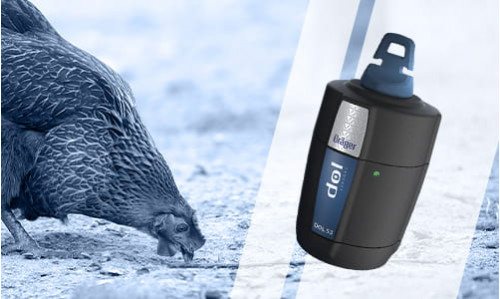Sie müssen eingeloggt sein
-
WróćX
-
Komponenten
-
-
Category
-
Halbleiter
- Dioden
- Thyristoren
- Elektroisolierte Module
- Brückengleichrichter
-
Transistoren
- Transistoren | GeneSiC
- SiC-MOSFET-Module | Mitsubishi
- SiC-MOSFET-Module | STARPOWER
- ABB SiC-MOSFET-Module
- IGBT-Module | MITSUBISHI
- Transistormodule | MITSUBISHI
- MOSFET-Module von MITSUBISHI
- Transistormodule | ABB
- IGBT-Module | POWEREX
- IGBT-Module | INFINEON (EUPEC)
- Halbleiterkomponente aus Siziliumkarbid
- Przejdź do podkategorii
- Treiber
- Leistungsblöcke
- Przejdź do podkategorii
- Strom- und Spannungswandler von LEM
-
Passive Elemente (Kondensatoren, Widerstände, Sicherungen, Filter)
- Widerstände
-
Sicherungen
- Miniatursicherungen für elektronische Schaltungen der Serien ABC und AGC
- Schnelle Röhrensicherungen
- Zeitverzögerungssicherungen mit GL / GG- und AM-Eigenschaften
- Ultraschnelle Sicherungseinsätze
- Britische und amerikanische schnelle Sicherungen
- Schnelle europäische Sicherungen
- Traktionssicherungen
- Hochspannungs-Sicherungseinsätze
- Przejdź do podkategorii
-
Kondensatoren
- Kondensatoren für Motoren
- Elektrolytkondensator
- Island Filmkondensatoren
- Leistungskondensatoren
- Kondensatoren für Gleichstromkreise
- Kondensatoren zur Leistungskompensation
- Hochspannungskondensatoren
- Induktionsheizkondensatoren
- Impulskondensatoren
- DC LINK-Kondensatoren
- Kondensatoren für AC / DC-Schaltungen
- Przejdź do podkategorii
- Entstörungsfilter
- Superkondensatoren
- Überspannungsschutz
- TEMPEST-Strahlungserkennungsfilter
- Überspannungsableiter
- Przejdź do podkategorii
-
Relais und Schütze
- Theorie der Relais und Schütze
- Dreiphasen-Halbleiterrelais AC
- Halbleiterrelais DC
- Regler, Steuerungen und Zubehör
- Sanftstarter und Schaltschütze
- Elektromechanische Relais
- Schütze
- Drehschalter
-
Einphasen-Halbleiterrelais AC
- Einphasen-Wechselstrom-Halbleiterrelais, Serie 1 | D2425 | D2450
- Einphasige AC-Halbleiterrelais der Serien CWA und CWD
- Einphasen-Wechselstrom-Halbleiterrelais der Serien CMRA und CMRD
- Einphasen-Wechselstrom-Halbleiterrelais, PS-Serie
- Doppel- und Vierfach-Wechselstrom-Halbleiterrelais, Serie D24 D, TD24 Q, H12D48 D.
- 1-phasige Festkörperrelais, gn-Serie
- Einphasige Wechselstrom-Halbleiterrelais, Serie ckr
- Einphasen-Wechselstromrelais der ERDA- UND ERAA-SERIE für die DIN-Schiene
- Einphasige Wechselstromrelais für 150A Strom
- Doppelte Halbleiterrelais mit integriertem Kühlkörper für eine DIN-Schiene
- Przejdź do podkategorii
- Einphasen-Halbleiterrelais AC für Leiterplatten
- Interface-Relais
- Przejdź do podkategorii
- Induktive Komponente
- Radiatoren, Varistoren, Thermoschütze
- Ventilatoren
- Klimaanlagen, Ausrüstung für Schaltschränke, Industriekühler
-
Batterien, Ladegeräte, Pufferstromversorgungen und Wechselrichter
- Batterien, Ladegeräte - theoretische Beschreibung
- Lithium-Ionen-Batterien. Kundenspezifische Batterien. Batteriemanagementsystem (BMS)
- Batterien
- Ladegeräte und Zubehör
- USV-Notstromversorgung und Pufferstromversorgung
- Konverter und Zubehör für die Photovoltaik
- Energiespeicher
- Brennstoffzellen
- Lithium-Ionen-Batterien
- Przejdź do podkategorii
-
Automation
- Spiralift Hebebühnen
- Futaba Drohnenteile
- Grenzschalter, Microschalter
- Sensoren, Wandler
-
Pyrometer
- Infrarot-Temperatursensor, kabellos, wasserdicht, IR-TE-Serie
- Infrarot-Temperatursensor, kabellos, IR-TA-Serie
- Infrarot-Temperatursensor, kabellos, IR-H-Serie
- Ein schnelles stationäres Pyrometer in einem sehr kleinen IR-BA-Gehäuse
- Lichtleiter-Temperatursensoren, IR-FA-Serie
- Das stationäre Pyrometer der IR-BZ-Serie
- Przejdź do podkategorii
- Zähler, Zeitrelais, Einbaumessgeräte
- Industrielle Schutzausrüstung
- Licht- und Signalentechnik
- Infrarot-Kamera
- LED-Anzeigen
- Taster, Schalter und Zubehör
- Przejdź do podkategorii
-
Adern, Litzen, Schutzhüllen, Flexible Verbingungen
- Drähte
- Kabeleinführungen und Kupplungen
- Litzen
-
Kabel für spezielle Anwendungen
- Verlängerungskabel und Kompensations
- Kabel für Thermoelemente
- Die Verbindungsdrähte zu czyjnków PT
- Mehradrige Kabel Temp. -60 ° C bis + 1400 ° C
- SILICOUL Mittelspannungskabeln
- Zündkabel
- Heizleitungen
- Einadriges Temp. -60 ° C bis + 450 ° C
- Zugbegleiter
- Heizleitungen im Ex
- Kabel für die Verteidigungsindustrie
- Przejdź do podkategorii
- Schläuche
-
Geflochtene Kabel
- Zöpfe flach
- Zöpfen Runde
- Sehr flexible Geflecht - flach
- Sehr flexible Geflecht - Rund
- Kupfergeflecht zylindrischen
- Kupfergeflechtschirm und zylindrischer
- Flexible Massebänder
- PVC-isolierte Kupferlitzen - Temperatur 85 ° C
- Flach geflochtene Aluminium
- Connection Kit - Zöpfe und Röhren
- Stahlgeflechte
- Przejdź do podkategorii
- Leitungen und Sonstiges für Traktion
- Crimpverbinder
- Flexible isolierte Kupferschienen
- Mehrschichte flexible Kupferschienen
- Kabelrohre, Kabelkanäle und Kabelführung
- Przejdź do podkategorii
- Zobacz wszystkie kategorie
-
Halbleiter
-
-
- Lieferanten
-
Applications
- AC- und DC-Antriebe (Wechselrichter)
- Ausrüstung für Verteilungs-, Steuerungs- und Telekommunikationsschränke
- Bergbau, Metallurgie und Gründung
- CNC-Werkzeugmaschinen
- Energy bank
- HLK-Automatisierung
- Induktionsheizung
- Industrielle Automatisierung
- Industrielle Automatisierung
- Industrielle Schutzvorrichtungen
- Komponenten für explosionsgefährdete Bereiche (EX)
- Maschinen zum Tiefziehen von Kunststoffen
- Maschinen zum Trocknen und Verarbeiten von Holz
- Motoren und Transformatoren
- Schweißmaschinen und Schweißmaschinen
- Straßenbahn- und Bahntraktion
- Temperaturmessung und -regelung
- Temperaturmessung und -regelung
- USV- und Gleichrichtersysteme
-
Installation
-
-
Inductors
-
-
Induktionsgeräte
-
-
Service
-
- Kontakt
- Zobacz wszystkie kategorie
Ammoniaksensor
Our extensive offer of sensors for use in industrial automation also includes ammonia sensors.
Ammonia Sensor DOL 53 consists of an electrochemical diffusion sensor and signal processing electronics. This sensor is intended for stationary, continuous monitoring of...
Our extensive offer of sensors for use in industrial automation also includes ammonia sensors.
Ammonia...
Kategorien
| Bild | Produkt anzeigen | Hersteller-Nr | ||||||||||
|---|---|---|---|---|---|---|---|---|---|---|---|---|
| picture_as_pdf |
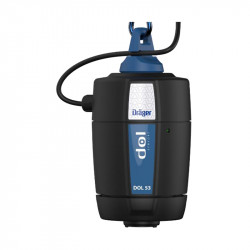
|
Dol-sensors | DOL 53 NH3 Ammoniaksensor | SEHEN SIE ES | -- | Verfügbare Menge | -- | -- | -- | -- | -- | -- |
| picture_as_pdf |
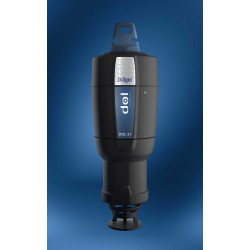
|
Dol-sensors | Ammoniaksensor DOL 51 140312 | SEHEN SIE ES | 140312 | Verfügbare Menge | -- | -- | -- | 18-30VDC | Stromspannung | 0-100ppm |
| picture_as_pdf |
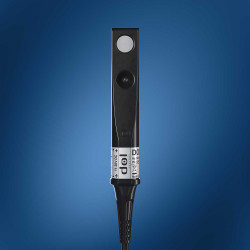
|
Dol-sensors | Ammoniaksensor DOL 51 140299 | SEHEN SIE ES | 140299 | Verfügbare Menge | -- | -- | -- | -- | -- | -- |
| picture_as_pdf |
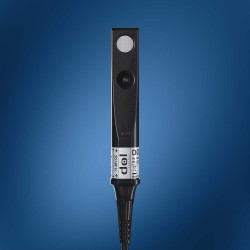
|
Dol-sensors | Ammoniaksensor DOL 51 140247 | SEHEN SIE ES | 140247 | Verfügbare Menge | 0 - 10 V | 0 - 100 ppm NH3 | 24 V DC | -- | -- | -- |
Our extensive offer of sensors for use in industrial automation also includes ammonia sensors.
Ammonia Sensor DOL 53 consists of an electrochemical diffusion sensor and signal processing electronics. This sensor is intended for stationary, continuous monitoring of the ammonia concentration in the air. It provides information about ammonia concentration measured by the sensor (in a given place). The measurement is made in a ppm unit, concerning the concentration in volume. Ammonia Sensor DOL 53 is connected to a suitable control unit over a 3-wire cable.
Ammonia sensor - applications:
- stationary, continuous monitoring of the ammonia concentration in the air with conditions typical for inventory buildings.
- vehicles - control in a closed cycle of SCR (Selective Catalytic Reduction) systems used in vehicles with Diesel engines.
- as a cooling factor in industrial cooling.
- in icehouses; cooled storages; sorting offices.
- machine workshops;
- technological objects;
- ammonia storage surroundings or of other cooling factors.
Ammonia is a dangerous gas, with a characteristic smell, combustive and explosive of mixed with air. With low concentrations it is not that hazardous for humans, however, with concentrations of 400 ppm or above it's highly dangerous.
Ammonia sensors are a key part of detection systems in ice houses and machine rooms with ammonia systems - provide safety for workers, products, objects, systems, and the environment. The choice of the right sensor depends on previously listed usages and the reasons why we need to install such devices. It also depends on fire requirements, possible errors, and the level of gas we want to be able to detect. The place in which we'll install the sensor is as important. They should be located at the highest points because ammonia is lighter than air. It's also crucial to consider the risk of freezing the sensor in icehouses because it can disrupt its proper operation.
Zusammenhängende Posts
